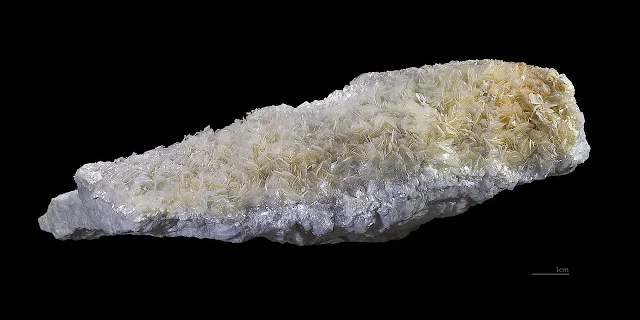Ad Code
Translate
List of 6,000+ Dofollow Commentluv Blogs FREE (Updated 2025)
January 16, 2025
What is Ozempic (semaglutide)? (Updated in 2025)
January 30, 2025
How To Find Suitable Properties In Cyprus? (Updated in 2025)
January 11, 2025
Smart strategies for trading on crypto exchanges
April 23, 2025
The Production Of Talc And A Deep Analysis Of The Talc Market
Khabza Mkhize
February 06, 2024
Known as the softest mineral in the world, talc has a rating of 1 on the Mohs hardness scale and can be scratched with a fingernail. Although talc is famous for its use in talcum powder, it has broad applications in plastics, ceramics, insecticides, cosmetics, automotive, and more. Several varieties of talc are based on the level of processing and the end-use requirements.
Talc is resistant to heat, electricity, and acids, so it has broad applications as an industrial mineral. Due to the luster and softness of talc, along with its ability to absorb moisture, oils, and odor, talc has extensive commercial uses. While talc is slightly soluble in dilute mineral acids, it is insoluble in water. Talc can also be supplemented with additives to enhance desired characteristics.
Production Of Talc
Most often found in metamorphic rocks, talc is formed when magnesium minerals react in the presence of carbon dioxide and water in a process known as ‘talc carbonation,’ producing talc carbonate rocks. The rocks are then drilled, blasted, and crushed, after which sorting takes place, and the partially broken stones are further reduced to particle size. Impurities are removed, and finely ground talc is the end result.As talc production depends on sourcing suitable ore, the primary production hubs are centered in locations with an abundant natural supply of talc carbonate ores.
Producers from APAC are expected to continue to dominate the talc market supply globally until 2020 regarding prospects and production volume. Primary producers are China, India, Pakistan, and Afghanistan, with China and India leading the global talc exports. Pakistan and Afghanistan are emerging as famous exporters, offering talc at 20-25 percent cheaper rates than those of China and India.
Talc Applications
The numerous uses of talc drive the market; a few of the applications are:- Plastics - Talc is vital as a plastic filler, increasing the stability and stiffness of polypropylene, polyethylene, vinyl, nylon, and polyester products. The finest talc is used as a functional reinforcing filler for plastic parts used in automotive, such as under-the-hood, exteriors, and dashboards. Talc also boosts the heat resistance of plastic and reduces shrinkage. Compared to more complex mineral fillers, talc produces less abrasion during manufacturing.
- Ceramics - Talc is primarily used as a flux in traditional building ceramics such as tiles and sanitary fixtures, reducing firing temperatures in refractory applications. Thermal shock resistance is also boosted by the incorporation of talc in ceramics.
- Paint - Talc also serves as a filler and extender in paints, improving the suspension of solid color particles in the can and helping liquid paint stick to the wall without any sagging. Since powdered talc is typically a bright white color, it further whitens and brightens the paint, making it an excellent filler. As talc has low hardness, it causes less abrasion damage to the equipment used for painting.
- Food - Talc is used as an anti-stick coating agent in several favorite foods, such as cured meats, boiled sweets, chewing gum, and polishing. It is also used in olive oil production as a processing aid to improve the clarity of the oil and increase yield.
- Paper - In the rotogravure printing process, talc is used to improve printability and reduce surface friction, substantially improving print mill productivity. The matte texture of the paper is boosted, and ink scuff is diminished. As a pitch control agent, talc absorbs any sticky residue particles in pulp, preventing the deposition of such material on the final paper. Compared to chemical pitch control products, talc does not pollute the process water and is thus more efficient.
- Personal care - One of the most popular uses of talc is as a body powder, as it reduces oil levels on the skin. Talc is famous in the form of baby powder for general skin care for babies and to prevent rashes. Talc boosts the silky texture of blushes, eye shadows, and powder compacts in cosmetics. Talc also improves the sheen of beauty creams and the transparency of foundations. In pharmaceuticals, talc is used as a lubricant, glidant, and dilutant.
Despite being such a soft mineral, talc has immense versatility and is used in various industries. The plentiful supply further encourages innovations to develop more talc uses. By combining talc with other additives, its characteristics can further be enhanced. Talc is also environment-friendly, which is a significant benefit, especially compared to non-recyclable plastics.
Featured Post
12 Prominent new technologies and trends emerging in 2025
Khabza Mkhize-
April 02, 2025
Soapie Teasers
Sister Sites
Most Popular
List of 6,000+ Dofollow Commentluv Blogs FREE (Updated 2025)
January 16, 2025
Smart strategies for trading on crypto exchanges
April 23, 2025
Popular posts
List of 6,000+ Dofollow Commentluv Blogs FREE (Updated 2025)
January 16, 2025
Smart strategies for trading on crypto exchanges
April 23, 2025
Footer Menu Widget
Created By Blogspot Theme | Distributed By Gooyaabi Templates


0 Comments